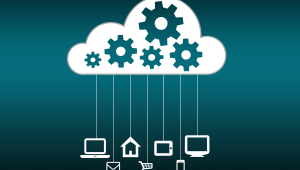In today’s increasingly digital world, protecting your online identity is more important than ever. As cyber threats grow more sophisticated, traditional password-only protection is no longer sufficient. This is where multi-factor authentication (MFA) comes into play.
Multi-factor authentication is a security method that requires users to provide two or more forms of verification before accessing an account or system. It adds a critical layer of defense beyond just a username and password, making it significantly harder for unauthorized individuals to gain access—even if your password is compromised.


How Does Multi-Factor Authentication Work?
The core idea of multi-factor authentication is to combine something you know (like a password), something you have (like a mobile device or security token), or something you are (like a fingerprint or facial scan). By requiring more than one of these factors, MFA reduces the risk of unauthorized access dramatically.
For example, when you log into your email from a new device, you may be prompted to enter a code sent to your phone. That’s MFA in action. Even if someone manages to steal your password, they won’t be able to access your account without the second verification step.
Why You Should Use Multi-Factor Authentication
-
Stronger Security: It minimizes the chances of identity theft and data breaches.
-
Peace of Mind: Knowing that your sensitive data is better protected provides reassurance.
-
Compliance: Many organizations are now required to implement multi-factor authentication to meet regulatory standards.
Whether you’re managing your personal email or accessing corporate data, enabling MFA should be a top priority. It’s a simple yet powerful tool that can significantly reduce the risk of unauthorized access.

Where Can You Use It?
Multi-factor authentication is available across many platforms and services today. From banking apps and social media to cloud storage and workplace systems, MFA is becoming the standard for secure login. Enabling it only takes a few minutes, but the protection it offers is long-lasting.
Cybersecurity isn’t just for large businesses or IT experts—it’s for everyone. By enabling multi-factor authentication, you’re taking a proactive step toward protecting your digital footprint. It’s one of the easiest and most effective ways to stay safe online.
Remember: One password is no longer enough. With multi-factor authentication, your accounts are better shielded from today’s cyber threats.
Liberation Tek prioritizes advanced security measures to protect its clients’ digital infrastructure, and one of the key strategies it employs is MFA. By integrating multi-factor authentication into its systems, Liberation Tek ensures that access to sensitive data and applications requires more than just a password—adding layers of verification such as mobile codes or biometric scans. This approach significantly reduces the risk of unauthorized access, safeguarding both personal and enterprise-level information. With cyber threats evolving daily, Liberation Tek’s commitment to using multi-factor authentication reflects its dedication to providing robust, future-ready security solutions.
As cybercrime continues to evolve, businesses and individuals must adopt smarter security practices. One of the most effective tools in this fight is multi-factor authentication. Unlike traditional login methods, MFA offers an extra barrier that helps prevent unauthorized access even if login credentials are leaked or stolen. Hackers often rely on phishing, data breaches, or brute force attacks to exploit weak passwords. With multi-factor authentication, these threats are significantly reduced because gaining access requires more than just a single compromised detail.
MFA isn’t limited to just passwords and SMS codes. Many modern systems now incorporate app-based authenticators, hardware keys, and biometric identification methods like fingerprint or facial recognition. These options make it easier and faster for users to verify their identity securely.
Small businesses, in particular, benefit greatly from implementing multi-factor authentication, as they are increasingly targeted by cyberattacks but may lack extensive IT support. MFA can be a cost-effective, easy-to-deploy solution that boosts overall security.
Ultimately, the goal of multi-factor authentication is not just protection, but confidence—knowing that your systems, accounts, and data are far more resilient against threats. It’s a critical part of any comprehensive cybersecurity strategy, and its adoption is only expected to grow.